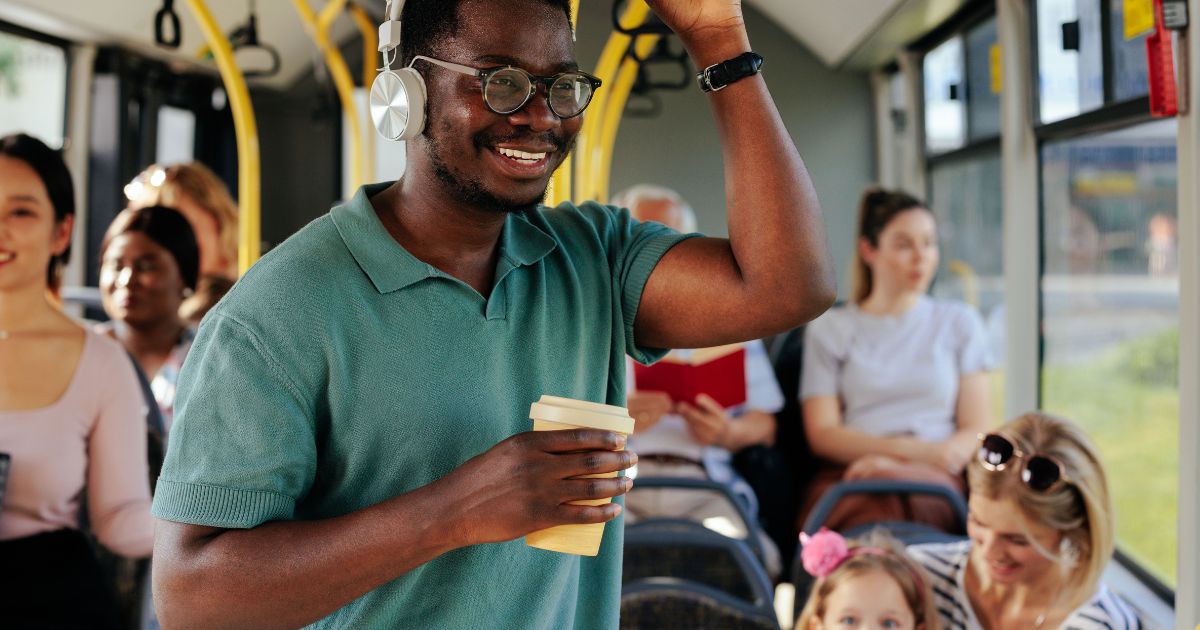
Cars are glorified in our culture. We’re bombarded with advertising that features drivers speeding down empty city streets or bucolic country roads, when in reality, drivers spend much of their time sitting in traffic. Nonetheless, transit agencies face some serious headwinds when trying to promote their services. It’s hard to fight the image of independence that car companies sell us.
Can we nudge people to ride public transit? Nudge theory is a behavioral science concept popularized in a 2008 book by Nobel prize-winning economist Richard Thaler and legal scholar Cass Sunstein. Thaler and Sunstein theorized that people’s behavior could be influenced by small, indirect changes in their environment. By optimizing the choices they present to people, organizations can encourage healthier, more beneficial behaviors; for example, by automatically enrolling new employees in a retirement plan rather than requiring them to sign up.
Although large scale findings are inconclusive, nudge theory makes sense anecdotally. Our lives are complicated and busy. We don’t always have the mental bandwidth to make the right decision. We could all use a process that picks the best default for us or displays the healthiest of many options front and center.
Cities have many ways to push their citizens towards mass transit. They can raise the price on on-street parking, cut back on parking requirements for new construction, even add congestion pricing to tolls. In fact, New York City has taken all these measures this past summer. However, these aren’t nudges. They are more of a metaphorical stick to punish drivers. Cities can also offer a metaphorical carrot (again, not a nudge) in the form of fare-free rides or other benefits.
It’s important to note that there are some ethical issues in nudging. Its efficacy has not always been proven in tests. At worst, it can be used to manipulate people in ways that don’t help them. But there are some legitimate ways to nudge drivers towards bus ridership.
One way is by reminding riders of the benefits of mass transit over cars. Average monthly payments for both new and used cars are currently at all-time highs. The average yearly cost of owning a car in the US is now $10,728. That amounts to roughly $21 a trip or $43 in costs per day, more if paid parking is required. Are there ways your agency can remind drivers of the high daily cost of car ownership? This could be information shared via social media or exterior signage (cars stuck in traffic behind your buses are, at least for a little while, a captive audience). Some public libraries use this nudge by printing on the bottom of each checkout receipt the amount of money saved by borrowing, not buying, books.
A similar technique would be reminding people how they can contribute to their area’s clean energy goals. According to Kansas City Transportation Authority, “A single person who switches from a 20-mile commuting alone by car to existing public transportation, can reduce their annual CO2 emissions by 20 pounds per day, or more than 48,000 pounds in a year.” Signage that informs a rider that they just saved 10 pounds of CO2 emissions on their ride is a nudge that returns “an immediate, emotional, and positive response.”
Another nudge is to make people aware that their peers are using the bus. Unfamiliarity makes it likely that drivers don’t realize many people like themselves use the bus every day. Social media campaigns that focus on the different riders and their reasons for using your services can help normalize bus ridership as an alternative to driving.
Finally, a nudge can be as simple as ensuring that people are aware of other transit options available to them, like on demand or rideshare programs. These are only a few ways to gently push drivers towards trying your transit services. Not all of them will work for your agency. But with ridership at record lows, nudges may be the creative approach you need to attract new riders.